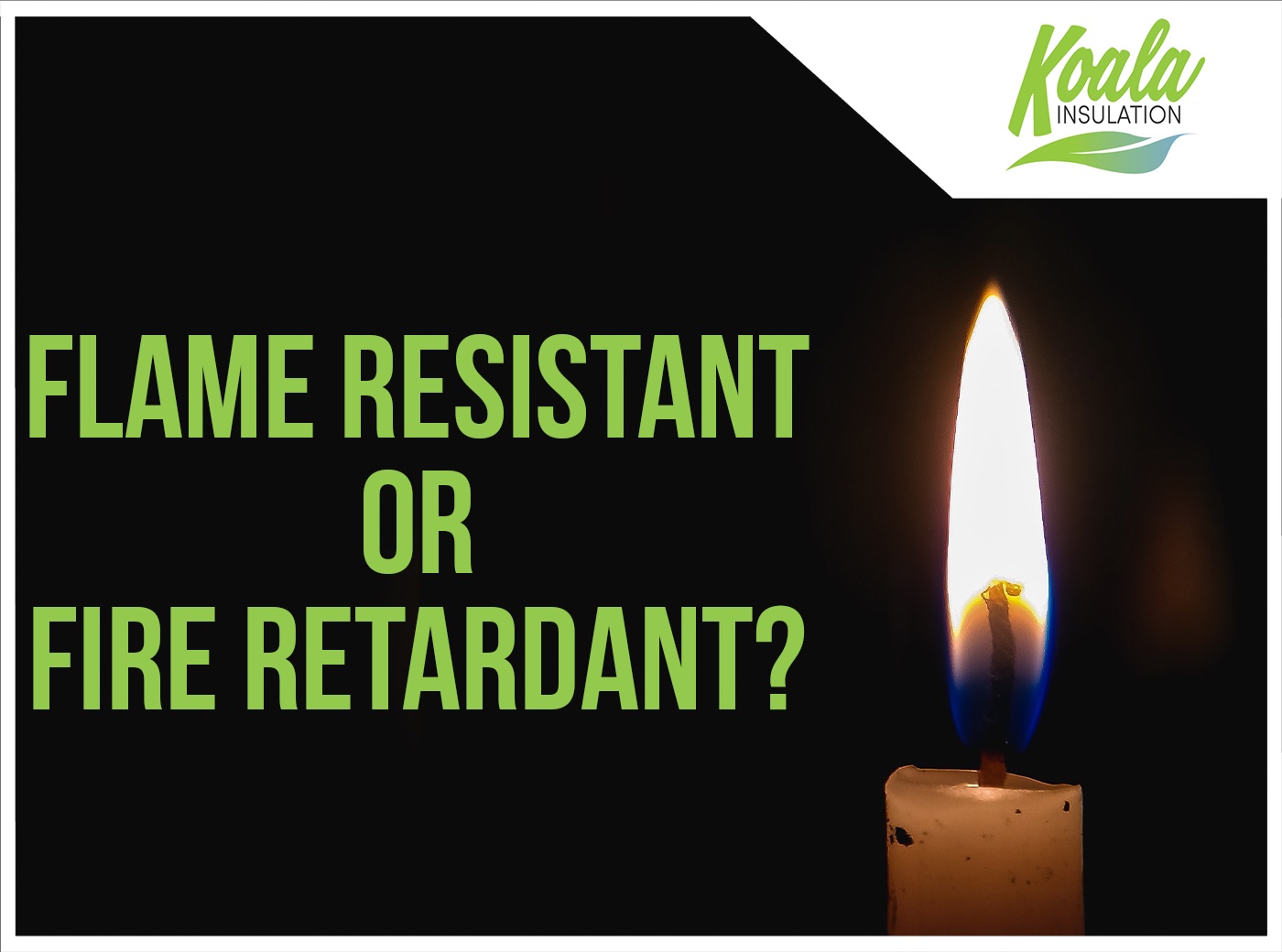Flame Resistant & Fire Retardant – The Difference in Insulation

Did you know there is a difference between the terms “flame resistant” and “fire retardant” for materials? Many people have a general habit of using the terms interchangeably and, in most cases, it’s a harmless switch. When it comes to understanding the material installed in your home, though, the difference is significant.
Insulation 101: Flame-Resistant & Fire Retardant
When a material is considered “inherently non-flammable”, it’s considered a flame-resistant product. They're naturally non-combustible and their chemical makeup contributes to their resistance to extreme heat and fires. In most cases, these materials won't necessarily need anything added during production to reduce their combustion chances.
Materials that don’t have the same benefits within their chemical compounds, on the other hand, need a fire retardant applied. This category of insulation can have additions made or will be chemically treated to provide a slow burning or self-extinguishing property in an effort to improve the safety of the product.
Important note: Although these materials can provide a potential barrier to slow the spread of fire, this is only in certain situations. Neither type will extinguish or snuff out a severe fire in a building.
Is Insulation Flammable? Compare Your Options
Having a basic breakdown of each type of material is a great way to understand and recognize the differences between flame-resistant and fire-retardant materials. Each fire safety property can even vary between similar materials.
Take the time to discuss your options with local industry professionals. This allows you to take note of where any potentially hazardous materials may be. With this information, you can better understand the needs and necessary precautions to take into account for these areas, allowing you to make a more informed decision on your next installation.
- Fiberglass and Mineral Wool
When you think about insulation, the first thing that comes to mind is most likely the “fluffy stuff” that can be found on the floor of your attic. Fiberglass and mineral wool are the most common materials homeowners are typically able to identify.
Both of these materials are considered flame-resistant. Even in cases where they've deteriorated, they're naturally non-combustible. Fiberglass is made of thinly spun glass combined with plastic polymers; mineral wool is made with inorganic materials like rock or blast furnace slag.
In certain areas, unfaced fiberglass batts used in wood frames are even considered an acceptable “fire block”. However, some batt material may have a combustible facing, which is a paper or foil covering on the outside of the material. In cases where faced batts are used, a code-approved fire barrier is additionally installed to cover the material.
- Cellulose
When it comes to updated insulation, many homeowners are looking for options that are not only cost-effective but also environmentally friendly. Cellulose checks off a lot of necessary criteria, including these important factors. This type of insulation is made up of about 80% recycled material, most of it being materials like old newspapers.
While the components of cellulose are typically considered flammable on their own, this material is chemically treated during production with a fire retardant. Boric acid is added to reduce the risk of flammability while also adding benefits like mold resistance and pest deterrent.
For more information on how cellulose can benefit your structure, check out Koala Insulation’s video “Insulation 101: Cellulose Insulation.”
- Spray Foam
While it may be less familiar for homeowners, spray foam insulation is another commonly used material. While it's more commonly attributed to commercial and industrial usage, it's also regularly applied to residential buildings. There are two types of material to choose from: open-cell and closed-cell. While each has its own application advantages, they both need fire retardant applied after installation.
One half-myth about spray foam insulation is that it's a problematic fire hazard when installed in your home. The truth is that untreated spray foam ignites at about 700?. However, insulation professionals take necessary precautions and additional steps to ensure this material is flame-retardant.
When the foam is set and dried on the surface, it’s covered in an intumescent coating or paint. This creates a protective barrier against high temperatures to increase the resistance against fire. For perspective, this kind of coating is a commonly used product to cover many different combustible objects and materials in both residential and commercial buildings.
Insulation Fire Safety: Making The Right Choice
In some cases, homeowners and companies may find flame-retardant materials less appealing when compared to flame-resistant alternatives. Both come with advantages depending on where they're installed and what other benefits they can offer. While each offers advantages for potential accidents and hazards, it's important to remember our earlier note: neither will prevent a serious fire. Therefore, fire safety is only one variable to consider when choosing the right insulation for your building.
Reduce Your Risks in Southeastern Texas
Understanding the unique needs of your home can help you and your household make informed decisions that are both effective and affordable. Koala Insulation of West Houston is dedicated to helping our neighbors find solutions that are energy-efficient and cost-effective. While improving the efficiency of your home is a top priority, upgraded insulation and air sealing also help to increase the comfort and safety of your environment.
Schedule your free evaluation with Koala Insulation of West Houston today and learn more about how you can reduce the risks in your building with quality material.
Find Your Location


Get a quote



